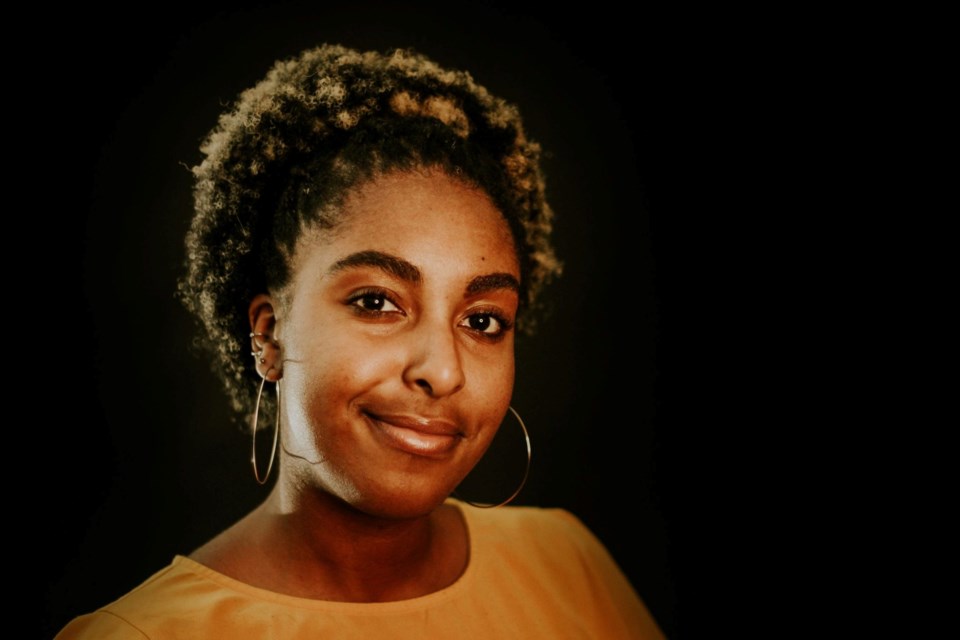When you speak to Ra’anaa Yaminah Ekundayo (formerly Brown), you get excited about whatever she is discussing. It’s impossible not to, she is passionate about everything she is doing. And for Ekundayo, those passions are art, and activism.
One she had to find her own path to; the other, she feels, was forced upon her.
“I feel like activism, especially people of colour and other marginalized folks, is definitely something we’re thrown into,” said Ekundayo. “Because you get to a point in life where you kind of have to be your own activist, or you're going to be severely depressed. And I mean, we're still severely depressed, even though we're fighting for ourselves.”
Ekundayo was born in southern Ontario and came to Sudbury in 2014 for schooling, completing a master’s degree from the McEwen School of Architecture before pursuing her PhD at Concordia University in Montreal, where she is now living.
But it was here in Sudbury that both her art and her activism truly ignited.
While Ekundayo, who is transitioning away from her last name ‘Brown’ in order to avoid its colonial implications, had always a love of art, and painting specifically, she didn’t know she could be an artist until she met a group of artists during her studies.
They encouraged her not just to curate shows, as she did in 2020 with the Up Here festival, but to create her own work. Not only did Ekundayo begin to help organize art shows like the McEwen Nuit Blanche, she has now moved to working with artists’ collective Solaris (alongside artists Sonia Ekiyor-Katimi, Isak Vaillancourt) for a show at Sudbury’s Amberhill Gallery and is now with non-profit Steps Public Art as a CreateSpace artist-in-residence.
Part of the awakening from curator into artist is realizing art comes in many forms.
“I really started to get enamored with this idea of art being this immersive experience, like you're inside the art, you're inhabiting the art, you're part of the art, you're you're part of the story that you're telling,” she said. “I think I've definitely gotten to this point now where I'm like, ‘I can create art for me, and not everyone's gonna like it, but to me, it's art’.”
What she also found in Sudbury was a community. But it was a community she discovered out of tragedy.
Ekundayo is Black, born of parents with Jamaican and Caribbean ancestry, and coming to Sudbury she didn’t immediately find many other people of colour, let alone other Black people. But after the deaths of George Floyd, Ahmaud Arbery, Breonna Taylor, and Regis Korchinski-Paquette, Black Lives Matter formed, co-founded by Ekundayo, a group for which she now serves as president.
It was activism thrust upon her, but also, she said, a chance to meet the rest of her community of colour in Sudbury. Through her work with BLM Sudbury, from Black Arts Festivals to protest rallies, she has solidified her understanding of herself and her place in the world.
She couldn’t find a Black supervisor for her master’s degree, written on a highly racialized topic — the effects of architecture on segregation in the Southside of Chicago — so she became her own expert in the area.
But now, she hopes to channel that into teaching, which she will begin doing at the McEwen School of Architecture in January of 2023. Because of her ADHD diagnosis, Ekundayo places on being mindful of students learning at different levels and speeds, but she also hopes to open to all what she considers colonial learning environments.
“That is something that I really want to start bringing to academia as I continue to grow within the profession,” she said. “It's important to remember it's okay for us (marginalized groups) to not fit in within these systems, because they weren't designed for us. And I think creating new spaces is something that is so beautiful, creating different systems that we can thrive, in systems that we can function within. It's important to know that we can put these things in place for ourselves, and we can take care of ourselves.”
Ekundayo said she hopes that as new BIPOC students come into academia, that they will do something it took her a long time to do: not shy away from the spotlight.
“I hope that they know that they can take up space, and they should take up space and have access to take up space,” she said. “Because that was one of the hardest things for me as a black woman, always thinking ‘I shouldn't say much, I shouldn't take my space, I'm just going to participate in these colonial bodies that already exist and participate in these institutions.”
But that all changed for Ekundayo, and she said that is the key to her success. “It's okay to go out and create your own thing. It's important to find your community to connect with other individuals, and it's okay to realize that you don't fit in within these systems and create a new one for yourself.”
Jenny Lamothe is a reporter at Sudbury.com. Success is made possible by our Community Leaders Program.



